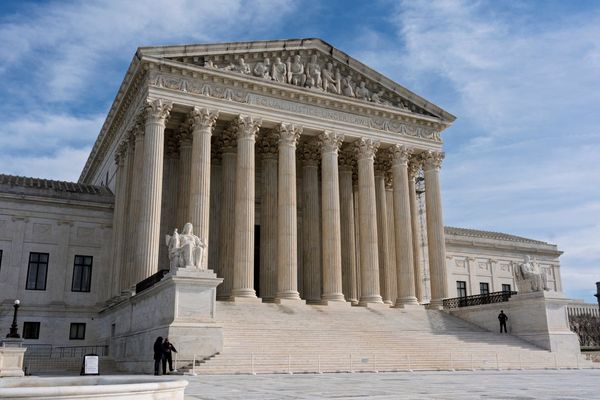
What a difference an election makes. Stock markets all over the world are soaring, both because Joe Biden has been elected the 46th president of the United States, immediately establishing a prestige-packed COVID-19 task force, and because the New York-based pharmaceutical giant Pfizer announced that its candidate SARS-CoV-2 vaccine is 90 percent effective in blocking infection with the coronavirus. A sense of hope has imbued financial markets.
“The results are really quite good, I mean extraordinary,” pronounced Anthony Fauci, director of the National Institute of Allergy and Infectious Diseases.
Minutes after New York stock markets opened Monday morning, nearly every index soared to historic heights, with the Dow gaining nearly 3 percent by the end of the day. Pfizer stocks surged 7.7 percent, and its German vaccine partner, BioNTech, got a 13.9 percent boost.
And it is all, indeed, very good news. But there are important caveats to consider that should temper the momentary euphoria. These include the current state of the pandemic, the ongoing management of the United States’ catastrophic COVID-19 crisis by lame-duck leadership in the White House and health-related agencies, limited information provided regarding the Pfizer vaccine, and doubts about the ability of the Centers for Disease Control and Prevention to manage a successful rollout of mass immunization across the United States.
While Biden supporters danced in streets across the country following the Nov. 7th announcement that the ticket garnered more than the 270 Electoral College votes required to win the tumultuous election, COVID-19 spread nationwide to historic, tragic levels. According to Johns Hopkins University’s COVID-19 tracker, the world total of officially tallied cases topped 50 million, with 1 out of every 5 known cases having occurred in the United States. The United States also accounts for 19 percent of world deaths: 1.3 million have died of COVID-19, about 240,000 of them in the United States. These numbers grossly understate the true scale of the United States’ and the world’s coronavirus cases and deaths, but accurately depict the sorrowful trends. Over the election-tallying weekend, more than 230,000 new COVID-19 infections were reported in the United States, with Nov. 8 marking the fifth day in a row that new case totals exceeded 100,000. As of Monday, a whopping 43 states saw their COVID-19 totals jump more than 10 percent compared with week, with hospitalization rates skyrocketing, as well. Cases are even climbing unacceptably in states that have had the virus under control for six months: New Jersey, New York, Massachusetts.
Overseas, the COVID-19 crisis is out of control in most of Europe, the United Kingdom, and key countries in the Americas. And throughout the world, the virus’ rampage is so taxing health facilities that all sorts of nonviral diseases are claiming the lives of hundreds of millions of people who are unable to get care for everything from diabetes to advanced cancer. If unabated, the pandemic could well surpass the estimated 50 to 75 million lives lost in the flu pandemic of 1918.
Leaders in several states that had long supported President Donald Trump’s opposition to lockdowns are now calling for strict COVID-19 control measures, including mandatory mask-wearing and closures of many businesses and forms of entertainment. In medical circles around the world, the mood is decidedly anxious. And conspiracy theories, opposition to economically painful lockdowns, and anti-vaccine sentiments are rising everywhere.
On Nov. 9, Biden released the names of a 13-member COVID-19 task force that will lead his administration’s response to the pandemic and the seven guiding principles under which they will operate. But the Trump administration remains in charge of COVID-19 for more than two months, with the virus spreading inside the West Wing of the White House and the president’s lead scientific advisor, Scott Atlas, advocating what amounts to a do-nothing approach to COVID-19 control. Insiders say a mass exodus is already unfolding as Trump-appointed health officials are sending out their resumes and searching for new jobs—by Thanksgiving, many key posts may be unfilled.
In October, when the United States was seeing 50,000 new cases per day, the cautious Institute for Health Metrics and Evaluation at the University of Washington predicted that by around Inauguration Day, deaths could reach 2,200 daily, with a cumulative total of 386,000. But since that Oct. 22 announcement, the daily infection total has more than doubled, and deaths have risen to more than 1,100 per day. If these trends go unfettered for more than 70 days, the United States’ official death tally could top 400,000 around Christmas, deaths might exceed 2,500 a day, and hospital wards across the country will be full.
Meanwhile, the lame-duck leadership at the Food and Drug Administration (FDA) must swiftly assess data from Pfizer to determine whether the vaccine is indeed safe and 90 percent effective, as the company claims. The only public “data,” if it can be so dubbed, is found in a corporate press release. While the FDA and researchers worldwide await further details, the company’s numbers are encouraging. In an ongoing phase-three trial, 38,955 volunteers so far have received two doses of the vaccine. To date, 94 of them have become infected with SARS-CoV-2. Though exact numbers are not provided by Pfizer, the company has said that most of those 94 infections were placebo recipients and that the vaccine was “more than 90% effective.”
The Phase 3 trial is not over. More than 4,500 volunteers haven’t yet had their second injection, or reached the one-week post immunization time point for COVID testing. And Pfizer has agreed to keep tracking all of the participants to see whether their immunity holds up for two weeks. So far, no side effects have been reported.
But let’s be clear about what this Pfizer study shows so far: For 90 percent of the volunteers who got the vaccine (as opposed to a placebo), SARS-CoV-2 infection did not occur for a study period of seven days.
Seven days. Nothing more is known.
If that protection turns out to be durable for, say, a full year, the Pfizer vaccine might be deemed a spectacular success. But nobody is going to wait a year to find out. The moment the FDA approves the product, Pfizer says in its press release, “we expect to produce globally up to 50 million vaccine doses in 2020 and up to 1.3 billion doses in 2021.”
If we assume that Pfizer’s vaccine is a home run, mass immunization offers huge hurdles. The product is unlike any vaccine ever used, for any disease. What is actually injected is messenger RNA (mRNA)—the genetic blueprint for protein production—triggering human cells to manufacture millions of copies of the spike protein that protrudes from the surface of SARS-CoV-2 viruses. As those spike proteins circulate in an immunized person’s body, they hopefully make antibodies and other immune system components to fight it off. Thus, the mRNA triggers production of decoys that train the immune system to “see” the virus if it arrives in the body and destroy it.
But mRNA is very unstable. To prevent breakdown, it must be stored right up until the time of injection at a temperature of at least -103 degrees Fahrenheit—well below anything a standard freezer unit can manage. Few health departments, hospitals, or doctors’ offices currently have stockpiles of dry ice or ultrafreezers that can manage to consistently hold temperatures that low, and none have piles of portable units that can do the job. Dry ice in coolers could do the job, but the world is facing a shortage in pure carbon dioxide, which becomes dry ice when frozen.
Meanwhile, vaccine opposition runs high across the United States, with polls showing that roughly one-third of Americans would be unwilling to roll up their sleeves for a new coronavirus immunization. The Biden administration will have to convince a deeply polarized nation to trust the government and get vaccinated. Few local and state health departments have the capacity to carry out immunization without substantial federal support, vaccine education, and implementation.
On Oct. 18, the National Governors Association, which is currently led by Gov. Andrew Cuomo of New York, posted dozens of logistical questions states have for the Centers for Disease Control and Prevention (CDC), which will be in charge of mass immunization, and of the White House. The organization asked who will pay for purchase of special freezers, teach vaccinators how to do their jobs and conduct mass education to counter anti-vaccine rhetoric.
Meanwhile, Biden hasn’t yet named his future CDC director. Morale in the much-maligned agency has reached toxic levels, and the Atlanta-based institution’s relationships with state and local health agencies has deteriorated. The success—or failure—of a mass immunization campaign in the United States will rest squarely on the shoulders of the person who next leads the CDC.
The news of the Pfizer vaccine and Biden COVID-19 task force are reasons for optimism. But both sources of hope will be sorely challenged in coming months by Trump administration inaction, soaring COVID-19 infections, and the lack of a genuine infrastructure across the United States for mass immunization.







